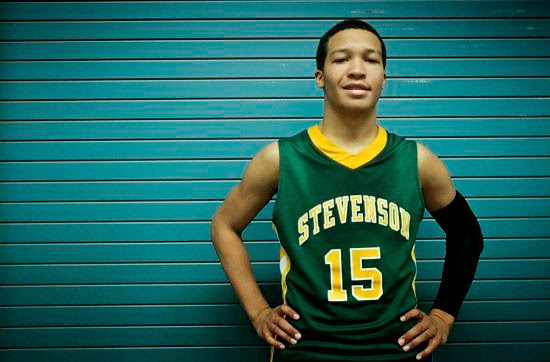The following op-ed is written by Professor Steven Willborn, the Judge Harry A. Spencer Professor of Law at the University of Nebraska College of Law (where he served as the Dean between 2001 and 2009).Steve was my mentor when I started as a law professor back in 2005 and while I was a member of the Southeastern Association of Law Schools. He is one of the most insightful persons in the legal academy, and is a leading expert on education law, labor law and employment law.-- Mike McCann* * *
Kain Colter is an Employee
Steve Willborn
Spencer Professor of Law, University of Nebraska
Kain Colter, a quarterback, is trying to unionize the Northwestern football team, and the NCAA is worried. To unionize under the National Labor Relations Act (NLRA), Colter needs to prove he is an “employee.” The NCAA fears that labeling college athletes as employees will upend the entire structure of college athletics. It is most worried about one part of that structure – the financial structure which produces billions in revenues with a primary workforce that earns, well, not much.
It turns out that Colter is an employee, but the NCAA should not be so worried. Instead, it should plan for the day when college athletes are considered employees.
Whether Colter is an employee under the NLRA is a close call. The closest cases involve teaching assistants at universities. The National Labor Relations Board has held that they are “primarily students” and, thus, not employees under the NLRA. But some of the reasons the Board gives for teaching assistants do not apply to college athletes, such as the close tie between teaching and academic program and the close personal relationships with professors. But maybe the Board will think Colter is more like a singer in the chorus at the Seattle Opera than a teaching assistant. These singers signed “letters of intent” to sing with the opera, worked under close supervision, and received minimal compensation. The Board found them to be employees. Maybe that’s the better analogy. In either event, it’s a close call for Colter.
But even if Colter is not an employee under the NLRA, it does not mean he is not an employee under every statute everywhere. He may have a stronger claim that he is an employee under the Fair Labor Standards Act, which requires minimum wages and overtime premiums. If injured, he might seek damages as an employee under the workers’ compensation laws. If sexually or racially harassed, he might seek recourse under employment discrimination statutes. (Things like that have been known to happen in football.) Colter himself might be an employee under dozens of different statutes. Nationally, college athletes could make claims under hundreds of different employment statutes, each with their own definition of “employee.” This is why Colter is an employee. Even if he is not one under the NLRA, he is one somewhere, for some purpose. Looking beyond Colter, college athletes have so many opportunities to make the claim under so many statutes that, someday, somewhere, they are sure to be classified as employees.
The NCAA should be worried about this. Many of its regulations simply do not align well with some employment statutes. But the NCAA shouldn’t be completely distraught. Unionization, for example, would not necessarily conflict at all with any NCAA regulations. It would only require Northwestern to sit down with the football players and talk. No violation there; the NCAA says it already does that. The NLRA doesn’t require the NCAA or Northwestern to agree to any changes the players might demand that would conflict with current practices. None. Similarly, I do not know of any NCAA regulations that say that college athletes cannot seek full recourse if they are sexually or racially harassed.
Some employment regulation would conflict with current NCAA policies. The NCAA’s current practices, for example, would run into trouble under the Fair Labor Standards Act which requires modest payments for work, mostly in cash. But maybe requiring “fair” labor standards wouldn’t be a bad thing? Maybe it would even be a good thing?
So, yes, the NCAA should worry. But mostly it should plan for the inevitable day when college athletes are determined to be employees. The NCAA will have a more challenging task when that day arrives. Complying with employment laws is complicated and expensive. But that’s true for all employers. For better or worse, we as a society have decided that those complications are worth it to ensure fair wages, nondiscrimination, and the other things protected by employment statutes.
If it tries hard, the NCAA will be able to accommodate to this new world. We know that sports leagues can be managed even when the players are employees. There are a few fairly well-known sports leagues that manage to operate under that condition, such as the National Football League and the National Basketball Association. (Although their profit margins tend to be much lower than those of big-time college football teams.) It can be done.
So Kain Colter may win his NLRA case and be an employee. Or he may lose and we will have to wait for the day when he or another college athlete is determined to be an employee under some other employment statute. But that day will come. And the NCAA should begin planning for that day now.
 I'm honored to be participating in the upcoming Oregon Law Review symposium titled NCAA in Crisis: The Crossroads of Intercollegiate Sports. The topic couldn't be more timely. The symposium will be held on Friday April 11.
I'm honored to be participating in the upcoming Oregon Law Review symposium titled NCAA in Crisis: The Crossroads of Intercollegiate Sports. The topic couldn't be more timely. The symposium will be held on Friday April 11.





